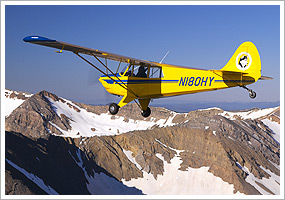training tips  Holiday season flying Holiday season flying The winter holidays provide a variety of opportunities to catch up on your flying, or nail down specific training program requirements. From having some extra time to schedule a night flight to setting aside a few hours for a cross-country, holiday periods are a great chance to get aloft (with some cooperation from the weather). Book your trainer early and make some plans to fly! Don’t overlook a few details specific to the season, and plan accordingly in case the airport is busier than usual. One good idea for winter holiday flying is to know your BRAGs and BRAFs. Those two acronyms are from the series of descriptions of braking action that you will see and hear when checking on runway conditions, as discussed in the Nov. 28, 2003, Training Tip. Snow or ice on the runway demands your best efforts at directional control during takeoff runs, landing rolls, and taxiing. If you haven’t been trying too hard to line up on the center line of the runway—and keep it where it belongs throughout takeoff or landing—now is a good time to refocus your directional control technique. Review landing technique with your instructor, and get some dual practice if you haven’t flown much lately. The soft-field technique may be a good solution for tackling a runway dusted with snow. Get the wheels off the surface as early as possible on takeoff. Touch down at minimum possible airspeed and minimize braking on landing. If your cross-country destination is snow covered, how deep is the snow? It’s bad planning to leave answering this important question to guesswork, as this December 2006 Air Safety Institute Safety Spotlight makes clear. See also the tips offered in the Air Safety Institute’s “Takeoffs and Landings” Webinar. “Landing light: on” is the way to fly in or near the traffic pattern when other aircraft, or reindeer, may be close at hand. When on the ground, stay aware of one of winter’s unique hazards: snowdrifts. Whether you are taxiing, taking off, or landing, they may be closer than you think, and not always easy to see. And their ability to snare a wing tip is legendary. Take a little care, and make big strides. Here’s hoping that the holidays provide a gift of reinvigoration for your flight training! training products Sporty’s elevator cushion offers pilots a lift If seeing over the instrument panel or reaching the rudder pedals is a strain, consider getting a lift from Sporty’s Elevator Cushion. The seat bottom measures 14 inches in width by 12 inches in depth and 2.5 inches thick; the back of the cushion is 14 inches wide, 18 inches in depth, and 2.5 inches thick. It weighs 32 ounces and features a pocket on the front and back that can hold a chart. The Elevator Cushion sells for $49.95 and may be ordered online or by calling 800/SPORTYS. Note: Products listed have not been evaluated by ePilot editors unless otherwise noted. AOPA assumes no responsibility for products or services listed or for claims or actions by manufacturers or vendors. final exam Question: I’ve read what the Aeronautical Information Manual (AIM) and the federal aviation regulations say about restricted airspace; however, I’m still in doubt as to whether or not I can fly VFR through restricted airspace that is not active without a specific clearance. Can you help me? Answer: Yes, you can fly VFR through restricted airspace without a specific clearance as long as the controlling or using agency has determined that the restricted area is not active or is “cold” as some pilots like to refer to it. This would, of course, necessitate that you make contact with the appropriate controlling or using agency and that they communicate to you that the restricted area is inactive. Restricted airspace can contain some perilous surprises such as aerial gunnery or guided missiles, so it is wise to know what is going on before penetrating the airspace. For more on special-use airspace, take the Air Safety Institute’s Mission: Possible, Navigating Today’s Special Use Airspace online course. Got a question for our technical services staff? E-mail [email protected] or call the Pilot Information Center, 800/872-2672. Don’t forget the online archive of “Final Exam” questions and answers, searchable by keyword or topic. |  Holiday season flying
Holiday season flying

